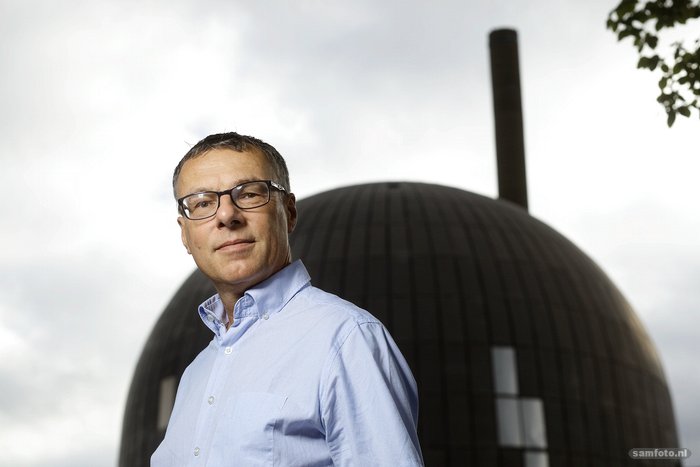Make nuclear energy sustainable
Could we supplement a CO2-free energy supply by using sustainable and safe thorium reactors? Reactor physicist Jan Leen Kloosterman feels Europe should be investing in this.
Prof. Jan Leen Kloosterman first became interested in the idea of a thorium reactor in around 2005. Research at the Reactor Institute Delft was then focused on the development of an inherently safe reactor that would never suffer a meltdown. Kloosterman also aimed to make nuclear energy more sustainable by preventing long-term nuclear waste. This is possible if thorium is used as a fuel instead of uranium. The longest-living isotopes would then need to be stored for 300 years, rather than the millennia needed for the current uranium reactors.
But the thorium cycle calls for a completely different reactor design. Thorium and other substances, such as the fission products, are dissolved in molten salt that flows through the reactor as a coolant. Heat exchangers transport the heat from the core (750 degrees) to steam turbines. This kind of reactor is called an MSR (molten salt reactor).
“It has a completely different safety concept than the reactors we currently have,” explains Kloosterman. “We’re used to keeping the fissile fuel in the core, where nothing is allowed to happen to it. The concept of the MSR actually involves allowing the fissile fuel to flow.” If it overheats, a plug at the bottom of the reactor melts and the salt flows out of the reactor with the fissile fuel. Engineers call this passive safety.
Kloosterman knows that with a CO₂-free energy supply, solar and wind energy will need to be supplemented by capacity from power plants, such as nuclear energy. So, should we do that with uranium reactors, or would sustainable and inherently safe thorium reactors be preferable?
A simple question really, but thorium reactors have not yet been developed. TU Delft researchers have been collaborating with European colleagues on the design, safety and simulations of molten salt reactors since 2010. “In the EU, we now have a good idea of how this kind of reactor behaves.”
The next step is an experiment in which researchers can work with large quantities of molten salt to learn how it behaves and whether this matches the simulations. Kloosterman estimates the cost of a large-scale experiment of this kind and the development of a prototype MSR to be €200 million.
At a ministerial lobby on the subject of the energy transition with the universities of technology and NRG in Petten, Kloosterman pointed out that the date when the thorium reactor could make a large-scale contribution is too far away for politicians. Their climate target horizon is 2030.
In the meantime, the United States and China are investing heavily in the development of the thorium reactor. Can’t we just import it? “In order to run this type of reactor, you really need a lot of experience with molten salt.
I think that Europe needs to invest in it itself. Especially when it comes to energy supplies, you shouldn’t become dependent on foreign countries.”
